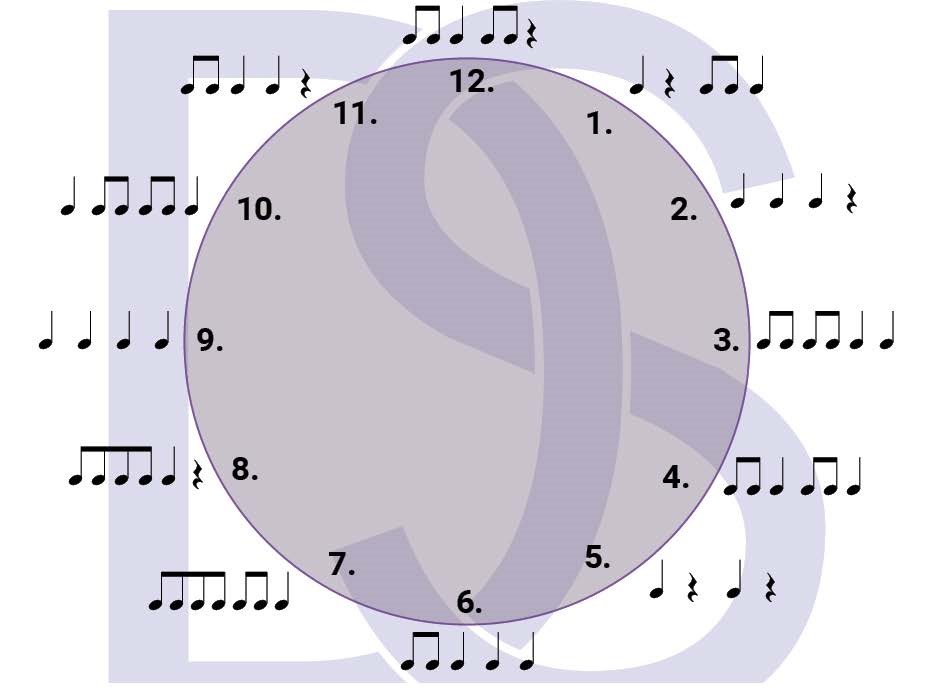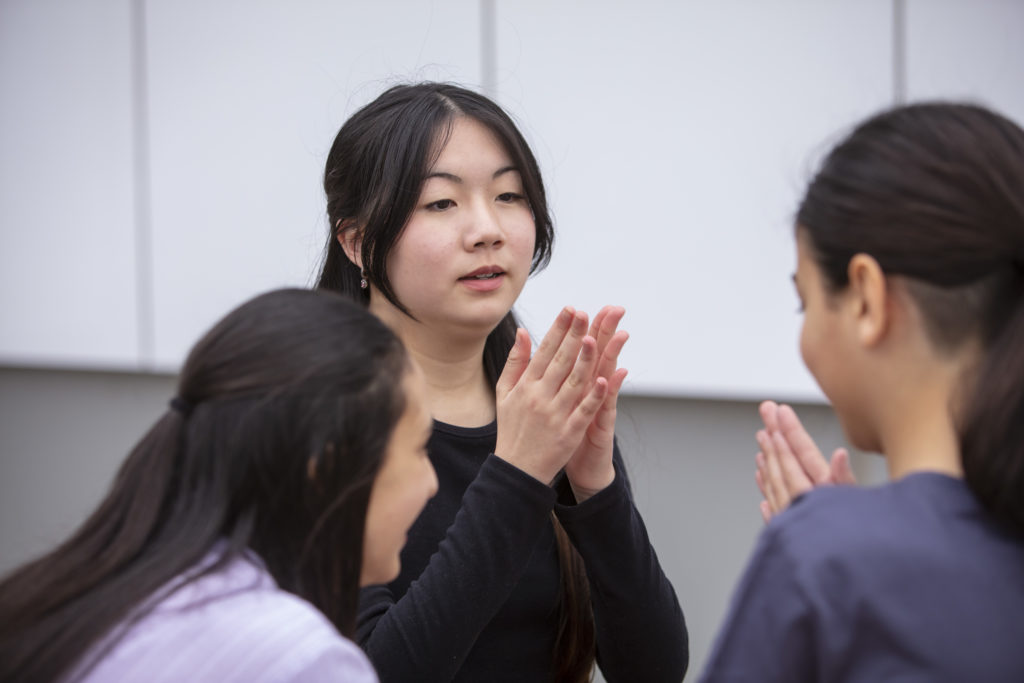3 rhythm-based instrumental activities for your rehearsals
Comments Off on 3 rhythm-based instrumental activities for your rehearsalsRead on for ideas for how to use these rhythm-based activities in lessons, rehearsals or practical classes on instruments. These activities are adapted from singing-based versions available via the Music Teachers’ Digital Library (note, only accessible with a subscription).
Rhythmic Practice Activity: Rhythm Clock
In this activity, students perform rhythmic patterns according to the time on a rhythm clock.
Step 1. The teacher displays this Rhythm Clock 1 for students to see (using computer connection, digital projector or similar).
Step 2. Students keep the beat by tapping their feet and perform the rhythms they see by playing all four beat rhythms (on a single repeated note) beginning at 1 o’clock, moving clockwise around the clock.
Step 3. Repeat Step 2., in reverse.
Note: For instrumental lessons rhythms could be performed on instruments on a single note or using the notes in a scale being practiced.

Rhythmic Practice Activity: Clever Echo Canon
In this activity, students perform an immediate clever echo (without clapping and aurally deriving the rhythm first) as a canon.
- Step 1. The teacher claps a continuous rhythm using known rhythms and moving in groups of two beats. (This can be done with any number of beats as students become more adept at this activity).
- Step 2. After the first two beats the students play back (on a repeated note) the first two beats the teacher clapped. This is done as the teacher claps the next two beats of rhythm, creating a canon effect.
Rhythmic Practice Activity: Ostinato Composition
In this activity, students compose a four beat rhythmic ostinato to accompany known songs.
Step 1. The teacher sings a known song, rehearsal work or melody while keeping a steady beat, on a neutral syllable e.g. “doo”.
Step 2. The class identifies it while performing the beat (e.g. on their feet) and clapping the rhythm.

- Step 3. On the board are four empty beat circles. The teacher chooses students to come write either a Crotchet, Quavers or Crotchet Rest in each beat circle. This rhythm forms an ostinato – a musical pattern that is repeated over and over.
- Step 4. The students then clap this ostinato through twice before half the group play the song, work or melody as normal, while the other half continue clapping the ostinato.
- Step 5. Other students take turns at creating beats or whole ostinati to perform with the song, work or melody.
This activity can lead to some good discussion around composing e.g. discuss whether each ostinato is easy/hard/logical etc. to pair with the work and why.
Note: In ensemble classes the ostinato could be performed by a group of students while others play a known song.
Let the Music Teacher’s Digital Library (MTDL) offer you many more rhythm-based practice activities!
Happy practicing, everyone! – Deb


Comments are closed